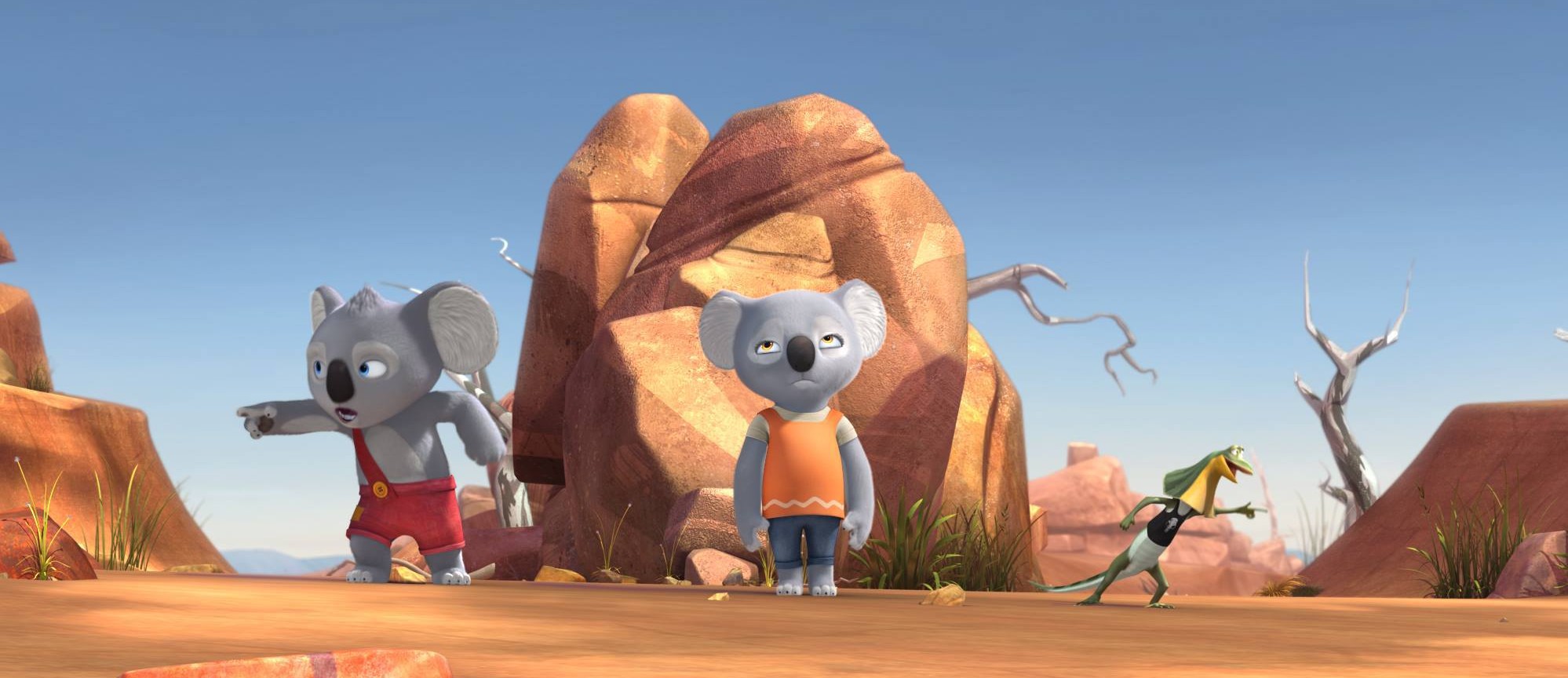Practically every aspect of Blinky Bill the Movie is regrettable, the film contributing nothing to the legacy of Australia’s most famous koala, a legacy established in the 1930s with Dorothy Wall’s series of books and expanded upon in the 1990s by the Yoram Gross-helmed film and TV series. Instead, it’s a firm step backwards for ‘ol Blinky, the ugly, corner-cutting CGI animation retaining none of the charm of either Wall’s or Yoram Gross’s illustrations and watering down the strong environmentalist message of its predecessors for easily digestible mainstream consumption. From the painfully unfunny and utterly unoriginal screenplay, to the embarrassingly amateurish animation and wasted talent of some of Australia’s finest actors in the supporting cast, Blinky Bill the Movie sees Blinky lobotomised and transplanted into a second-rate Lion King ripoff with a side dish of Australiana.
We first meet Blinky (Ryan Kwanten) in his hometown of Greenpatch as his explorer father (Richard Roxburgh, dusting off his ‘absent dad’ act from Rake) bids farewell to Blinky and Mrs. Bill (Deborah Mailman) and leaves in search of the mythical Sea of White Dragons. Some time passes, and Blinky begins to fear the worst. He sets off to try and track down his father, hoodwinking mama bear by installing a lyre bird in his room to impersonate him. It’s here that Blinky Bill begins to bear more than a passing resemblance to The Lion King. Blinky picks up two sidekicks, the ‘zoo koala’ Nutsy (Robin McLeavy) and neurotic lizard Jacko (David Wenham), who strongly recall Nala and Zazu. The antagonist, British Shorthair cat Sir Claude (Rufus Sewell) is also a dead ringer for Scar, right down to the British-accented bitter sarcasm. There’s even an Elephant Graveyard-esque “Crocodile Canyon”, complete with a familiar cliff-hanger moment.
In the production notes, screenwriter Fin Edquist (whose previous writing credits include House Husbands and Home and Away) admits to not being too familiar with the previous iterations of Blinky Bill, explaining:
“It was liberating in a way because I didn’t have any personal expectation to deliver a script that paid homage to a legacy from my childhood. That kind of pressure can make you go crazy!”
Indeed, the team behind Blinky Bill the Movie certainly seem less interested in “paying homage” to its legacy and rather more interested in cashing in on it with the novel implementation of CGI animation. The inferiority of the animation compared to much bigger-budgeted and more sophisticated animated features such as Big Hero 6 and Inside Out is patently obvious. Noticeably less detail is put into minor characters, and the backgrounds are often left bare and uninspiring. At one point Blinky and Nutsy express awe at happening upon a supposedly stunning vista, acting only to draw attention to precisely how little awe the vista inspires.
Particularly disappointing is the aforementioned watering-down of the environmentalism that has characterised Blinky Bill in the past. In the second chapter of Wall’s original 1933 book, Blinky’s father gets brutally gunned down from his tree by a hunter while Blinky and his mother look on, permanently traumatised. The theme song of Yoram Gross’ The Adventures of Blinky Bill also controversially featured the line “Hey, hey, Blinky Bill, save us from that woodchip mill,” (although it changed to “you’ll never catch him standing still” in the following series). However, the strongest environmentalist message Blinky Bill the Movie could muster is a vague anti-littering sentiment, with Blinky shocked at the sight of a few fast-food containers and discarded takeaway coffee cups upon exiting his idyllic Greenpatch.
Brief reprieve is granted on occasion by the talented supporting cast, with both Barry Humphries and David Wenham delivering amusing performances as the charmingly off-his-tree Wombo and anxious amphibian Jacko respectively. Toni Collette also does her best Prue and Trude from Kath & Kim impersonation with twin emus Sheryl and Beryl. However, there’s ultimately little the actors can do with the overly Australiana-laden screenplay, amounting to the filmic equivalent of this Subaru commercial or a 12th Man Talking Bottle Opener.
Despite being produced by the same company that made the original film and TV series, Yoram Gross Studios, (albeit under its new moniker as Flying Bark Productions), there’s little to suggest that the talent, imagination and charm the company was previously capable of has been passed down.1 Perhaps it’s time to let sleeping koalas lie, and leave nostalgia out of the cinema, concentrating on creating new cultural icons instead of making inferior and unnecessary reprisals of old ones.

